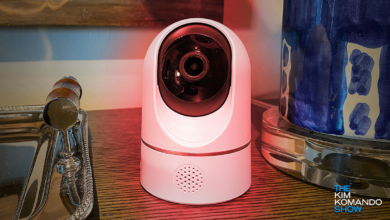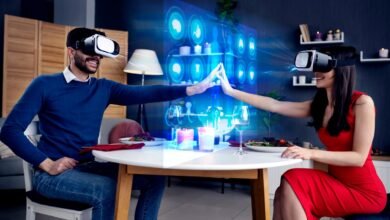
In recent years, the concept of the Metaverse has captured the imagination of people worldwide. This virtual realm, where the physical and digital worlds converge, has the potential to revolutionize various aspects of our lives. One such area is education. In this article, we will explore how educators and students can harness the power of the Metaverse to enhance the learning experience.
Use the Metaverse for Education
The Metaverse is a vast digital universe where individuals can interact with each other and digital objects in real-time. It’s not just a virtual playground for gamers; it has immense educational potential. Let’s explore how educators can leverage the Metaverse to create immersive and engaging learning experiences.
Understanding the Metaverse
Before diving into its educational applications, let’s better understand what the Metaverse is. In essence, it’s a collective virtual shared space that merges aspects of augmented reality (AR), virtual reality (VR), and the internet. Users can navigate this space using avatars, interact with others, and even create content.
Benefits of Using the Metaverse in Education
Enhancing Engagement
Use the Metaverse for Education: Traditional classrooms sometimes struggle to keep students engaged. The Metaverse offers a dynamic and interactive environment that can make learning more appealing. Students can explore virtual worlds, conduct experiments, and engage with historical events as if they were there.
Fostering Collaboration
Collaboration is a crucial skill in today’s world. The Metaverse allows students to collaborate on projects regardless of their physical locations. This fosters teamwork and cross-cultural understanding.
Expanding Learning Horizons
The Metaverse breaks down geographical barriers. Students can virtually visit museums, historic sites, and ecosystems worldwide. This opens up new dimensions of learning and cultural appreciation.
Read More: Exploring the Metaverse in 2023: A Comprehensive Guide
Challenges to Overcome
Use the Metaverse for Education: As promising as the Metaverse sounds, there are challenges to address.
Accessibility and Inclusivity
Ensuring that all students can access and benefit from the Metaverse is essential. This includes addressing affordability and hardware requirements and making the Metaverse accessible to students with disabilities.
Privacy Concerns
Handling personal data in virtual spaces raises privacy concerns. Educators must prioritize data security and ensure that students’ information remains confidential.
Technical Requirements
The Metaverse requires specific hardware and internet connectivity. Not all students can access these resources, creating a digital divide.
Practical Applications of the Metaverse in Education
Use the Metaverse for Education: Let’s explore how the Metaverse can be used effectively in education.
Virtual Classrooms
Imagine attending a history class in ancient Rome or a biology lesson inside a human cell. Virtual classrooms in the Metaverse can transport students to different eras and environments.
Interactive Simulations
Physics experiments, chemistry labs, and archaeological digs can be conducted safely in the Metaverse. These interactive simulations offer practical learning experiences.
Cultural and Historical Expeditions
Students can virtually explore cultural landmarks, historical sites, and museums worldwide. It’s like taking a field trip without leaving their seats.
Skill Development
The Metaverse isn’t limited to academic subjects. It can be a platform for developing skills like coding, design, and entrepreneurship.
Choosing the Right Metaverse Platform
Use the Metaverse for Education: Several Metaverse platforms are available, each with its unique features.
Decentraland
Decentraland is a blockchain-based virtual world where users can buy, sell, and build on virtual land.
Roblox
Roblox offers a user-friendly platform for creating and playing games. It’s popular among younger learners.
Second Life
Second Life has been around for years and offers diverse experiences, from educational simulations to social interaction.
VRChat
VRChat is a virtual reality platform that allows users to create and share worlds? It’s great for immersive experiences.
Creating Immersive Learning Environments
Use the Metaverse for Education: To make the most of the Metaverse, educators should focus on designing engaging learning spaces.
Designing Virtual Classrooms
Virtual classrooms should be intuitive, visually appealing, and conducive to learning.
Building Educational Experiences
Content creation tools in the Metaverse allow educators to craft unique learning experiences that cater to their curriculum.
Ensuring Security and Privacy
Use the Metaverse for Education: Protecting students’ privacy is paramount in the Metaverse.
Safeguarding Student Data
Educational institutions must implement robust data protection measures to secure student information.
Managing Access Control
Access to Metaverse environments should be controlled to prevent unauthorized users from entering.
Training Educators
Use the Metaverse for Education: To effectively utilize the Metaverse, educators may need training and professional development.
Adapting to Metaverse Teaching
Teaching in virtual spaces requires a different set of skills. Educators should be trained to navigate these environments effectively.
Professional Development
Continuous learning and skill development are essential for educators using the Metaverse in their teaching methods.
Measuring Learning Outcomes
Assessing student progress is crucial.
Analytics and Assessment
Tools within the Metaverse can provide data on student engagement, participation, and learning outcomes.
Tracking Progress
Regular assessment helps educators adjust their teaching methods to meet student needs effectively.
Future Possibilities
Use the Metaverse for Education: The potential of the Metaverse in education extends far beyond what we can currently imagine. As technology continues to advance and our understanding of virtual environments deepens, here are some exciting future possibilities:
Metaverse for Specialized Fields
Use the Metaverse for Education: As the Metaverse becomes more sophisticated, it can cater to specialized fields of study. Imagine medical students practicing surgery in a virtual operating room, architects designing buildings in a virtual city, or astronomers exploring distant galaxies through immersive simulations. The Metaverse can provide unparalleled training and experience for professionals in various disciplines.
Global Education Connectivity
Use the Metaverse for Education: The Metaverse can break down geographical barriers entirely. In the future, students and educators from all corners of the world can connect seamlessly in virtual classrooms. This global connectivity fosters cross-cultural learning experiences promotes international collaboration and exposes learners to diverse perspectives. It can lead to a more inclusive and interconnected world.
Personalized Learning Environments
Use the Metaverse for Education: Advanced artificial intelligence and machine learning algorithms can personalize the Metaverse learning experience for each student. These algorithms can adapt content, pacing, and assessments to match individual learning styles and needs. This tailored approach can enhance learning outcomes and cater to a wide range of abilities and preferences.
Augmented Reality Integration
Use the Metaverse for Education: As augmented reality (AR) technology improves, it can seamlessly integrate with the Metaverse. Imagine students using AR glasses or devices to enhance their real-world environment with virtual educational elements. For instance, historical landmarks could come to Life with historical reenactments, or biology lessons could involve interactive 3D models of organisms in the classroom.
Immersive Language Learning
Use the Metaverse for Education: Language acquisition can be greatly enhanced in the Metaverse. Students can be fully immersed in a language by interacting with native speakers and navigating virtual environments where that language is the primary mode of communication. This approach can accelerate language learning and cultural understanding.
Career Exploration and Internships
Use the Metaverse for Education: The Metaverse can offer realistic simulations of various careers. Students can explore different professions through immersive internships, gaining valuable insights and practical experience. This exposure can help students make informed career choices and better prepare for their future.
Enhanced Assessments and Certifications
Use the Metaverse for Education: Traditional assessments may evolve in the Metaverse. Instead of written exams, students could showcase their knowledge through interactive projects and real-world simulations. Certifications earned in virtual environments are significant in the job market as they demonstrate practical skills and competencies.
Virtual Libraries and Archives
Use the Metaverse for Education: The Metaverse can be a knowledge repository, hosting vast virtual libraries and historical archives. Students and researchers can access rare manuscripts, historical documents, and cultural artifacts from anywhere in the world. This democratization of knowledge can fuel research and innovation.
Ethical and Philosophical Discussions
Use the Metaverse for Education: As the Metaverse becomes more integrated into education, it can also be a platform for deep ethical and philosophical discussions. Students can engage in virtual debates, explore moral dilemmas, and gain a deeper understanding of complex issues, fostering critical thinking and empathy.
The future of education in the Metaverse is boundless, and as technology advances, these possibilities become realities. However, it’s important to navigate this digital frontier thoughtfully, addressing ethical, accessibility, and privacy considerations to ensure the benefits are accessible and equitable for all learners. The Metaverse holds the potential to redefine education in profound ways, empowering students to explore, create, and learn in unprecedented ways.
Read More: How Does Artificial Intelligence Work
Conclusion
The Metaverse holds immense promise for transforming education. By leveraging its immersive and interactive capabilities, educators can engage students like never before. However, it’s crucial to address challenges related to accessibility, privacy, and technical requirements to ensure that the benefits of the Metaverse are accessible to all.
FAQs
What exactly is the Metaverse?
The Metaverse is a virtual shared space that combines elements of augmented reality, virtual reality, and the internet, allowing users to interact with each other and digital objects in real-time.
Are there any age restrictions for using the Metaverse in education?
Age restrictions may vary depending on the platform, but many Metaverse platforms offer educational experiences suitable for learners of all ages.
How can educators ensure the safety of students in the Metaverse?
Educators should prioritize data security, control access to virtual environments, and guide safe online behavior.
Is the Metaverse accessible for students with disabilities?
Efforts should be made to make the Metaverse accessible to all, including students with disabilities, by addressing compatibility and usability issues.
What skills should educators acquire to effectively use the Metaverse?
Educators may need training in navigating virtual environments, creating immersive content, and safeguarding student data in the Metaverse.










